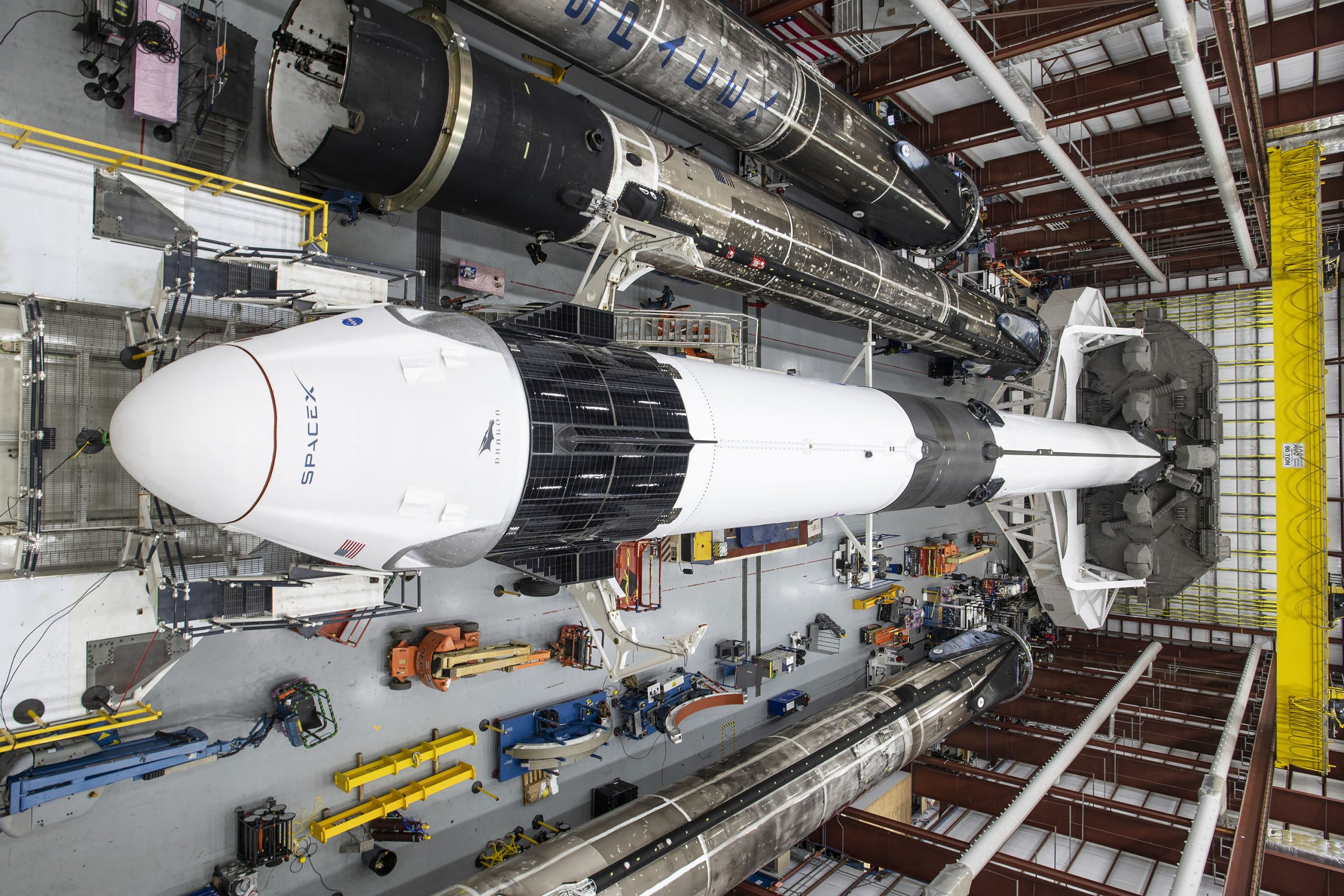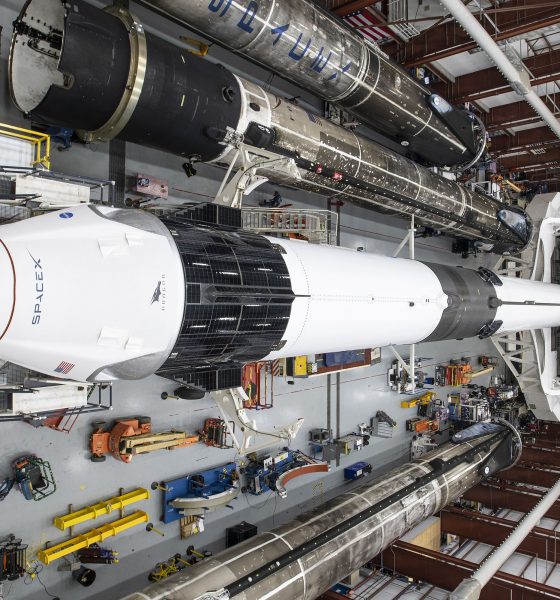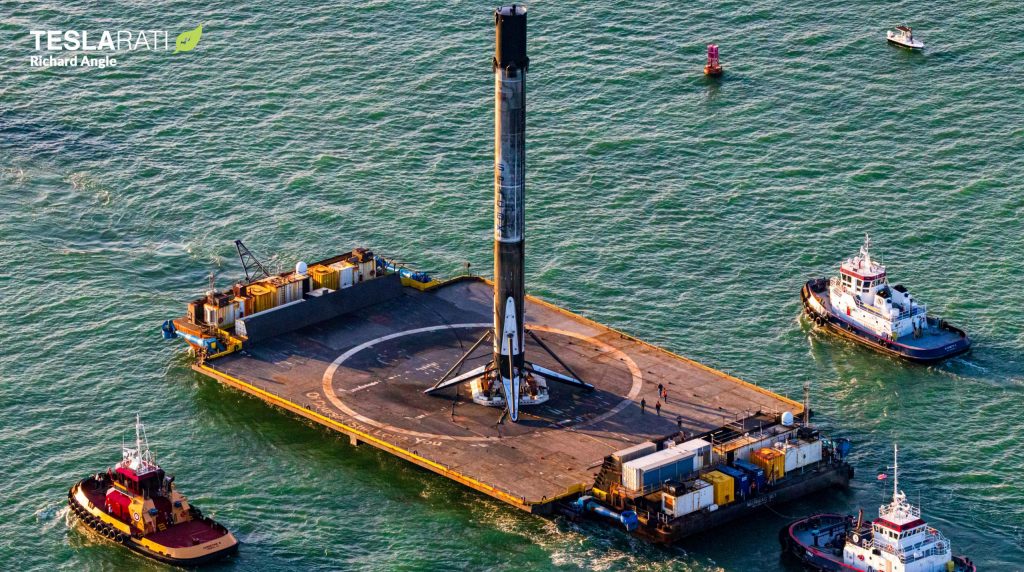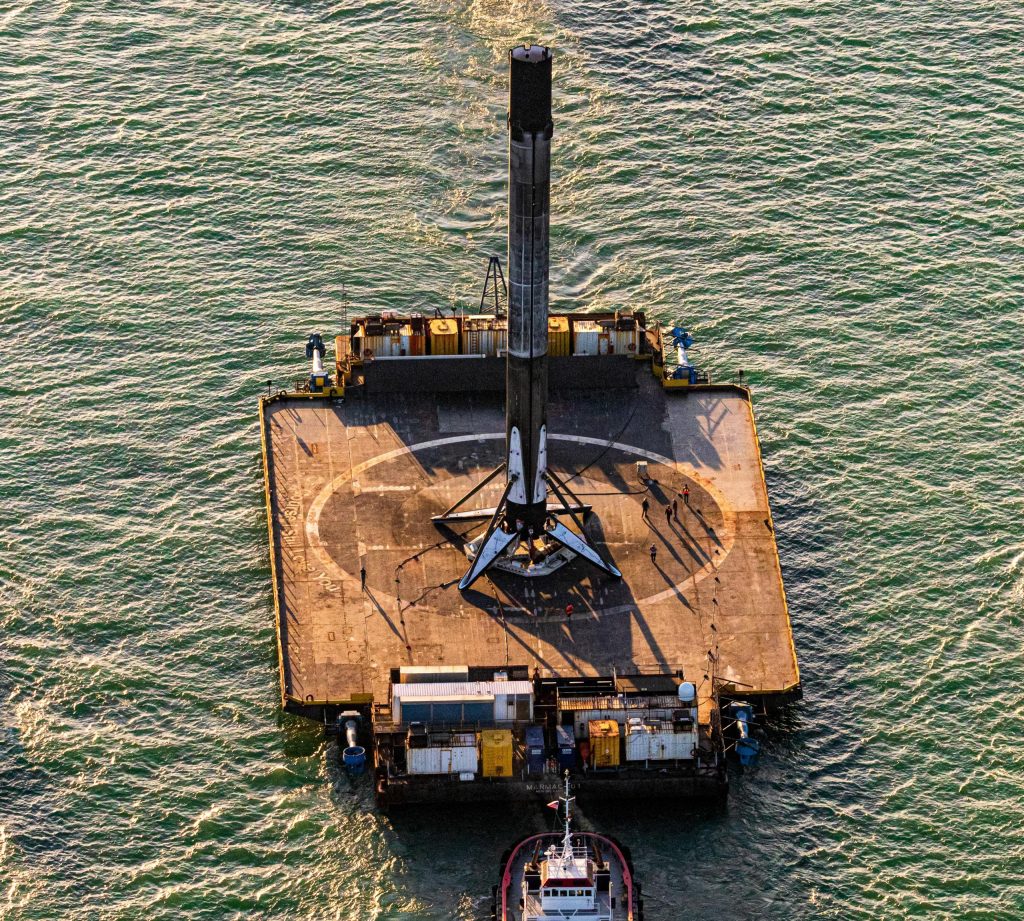

News
SpaceX drone ship departs for upgraded Cargo Dragon launch debut
SpaceX drone ship Of Course I Still Love You (OCISLY) has departed Port Canaveral ahead of an upgraded Cargo Dragon spacecraft’s Falcon 9 launch debut.
Scheduled to lift off no earlier than (NET) 11:39 am EST (16:39 UTC) on Saturday, December 5th, SpaceX’s 21st NASA Commercial Resupply Services (CRS) launch will mark several major firsts.

First and foremost, CRS-21 will debut an upgraded Cargo Dragon spacecraft. Derived from Crew Dragon (also known as Dragon 2), Cargo Dragon 2 will also dock with the ISS, utilizing a smaller docking (versus berthing) port that unfortunately limits the width of cargo Dragon will be able to deliver. Aside from improved reusability, SpaceX’s newest cargo spacecraft will otherwise be largely the same as Dragon 1 as far as cargo delivery goes.
Compared to SpaceX’s 20 CRS1 space station resupply missions, Cargo Dragon 2’s CRS2 launches will also be substantially more expensive, on average, though still NASA’s most affordable option. SpaceX executives have explained that cost increase as a result of the company’s growing confidence and greater awareness of its competition. NASA has only guaranteed six CRS2 contracts for three selected providers, leaving the space agency a great deal of leverage to analyze the playing field and issue at least as many new contracts to cover International Space Station (ISS) operations from at least 2023 to 2025.

Thanks to experience gained through joint NASA-SpaceX CRS1 contract modifications that allowed multiple Falcon 9 booster and Cargo Dragon capsule reuses, reusability – while again not built in to SpaceX’s CRS2 contract – will assuredly play a central role for most of the company’s future space station cargo missions. Unlike Dragon 1, which was only modified for reuse with an upgrade that debuted several launches into CRS1, the Dragon 2 capsule is designed from the start to fly at least five orbital missions.
NASA has already given SpaceX permission to reuse a more complex Crew Dragon spacecraft to launch astronauts as early as March 2021, so it’s all but guaranteed that the space agency will allow SpaceX to extensively reuse Cargo Dragon 2 capsules to complete its CRS2 contract. If so, it will likely save NASA a significant amount of money when it comes time to award additional CRS2 contracts.
Equally significant, NASA also appears to be upgrading its confidence in SpaceX’s reusable Falcon 9 rockets with CRS-21, permitting the company to reuse Falcon 9 booster B1058 on Cargo Dragon 2’s launch debut. While B1058 did support SpaceX’s Crew Dragon astronaut launch debut back in May 2020, the booster has since flown two more commercial missions, carrying a South Korean communications satellite and a batch of SpaceX’s own Starlink spacecraft in July and October. CRS-21 will be the first time NASA has allowed SpaceX to fly a space agency mission with a booster that’s supported non-NASA missions, implying a new level of trust in SpaceX.

It will also be the first time in history that a new spacecraft has debuted on a flight-proven rocket, as well as NASA’s first flight on both a twice-flown and thrice-flown Falcon 9 booster. If CRS-21 is a sign of things to come, life will be made much easier for SpaceX, reducing or eliminating the need to operate separate booster fleets for commercial and institutional customers.
Finally, CRS-21 will also mark the first time in history that two SpaceX Dragon spacecraft have been in orbit – or at the ISS – at the same time. A senior SpaceX Dragon manager recently noted that after Crew-1’s successful November 15th launch, all future Dragon launches would leave the company with two Dragons in orbit.

News
Elon Musk’s Grokipedia surges to 5.6M articles, almost 79% of English Wikipedia
The explosive growth marks a major milestone for the AI-powered online encyclopedia, which was launched by Elon Musk’s xAI just months ago.

Elon Musk’s Grokipedia has grown to an impressive 5,615,201 articles as of today, closing in on 79% of the English Wikipedia’s current total of 7,119,376 articles.
The explosive growth marks a major milestone for the AI-powered online encyclopedia, which was launched by Elon Musk’s xAI just months ago. Needless to say, it would only be a matter of time before Grokipedia exceeds English Wikipedia in sheer volume.
Grokipedia’s rapid growth
xAI’s vision for Grokipedia emphasizes neutrality, while Grok’s reasoning capabilities allow for fast drafting and fact-checking. When Elon Musk announced the initiative in late September 2025, he noted that Grokipedia would be an improvement to Wikipedia because it would be designed to avoid bias.
At the time, Musk noted that Grokipedia “is a necessary step towards the xAI goal of understanding the Universe.”
Grokipedia was launched in late October, and while xAI was careful to list it only as Version 0.1 at the time, the online encyclopedia immediately earned praise. Wikipedia co-founder Larry Sanger highlighted the project’s innovative approach, noting how it leverages AI to fill knowledge gaps and enable rapid updates. Netizens also observed how Grokipedia tends to present articles in a more objective manner compared to Wikipedia, which is edited by humans.
Elon Musk’s ambitious plans
With 5,615,201 total articles, Grokipedia has now grown to almost 79% of English Wikipedia’s article base. This is incredibly quick, though Grokipedia remains text-only for now. xAI, for its part, has now updated the online encyclopedia’s iteration to v0.2.
Elon Musk has shared bold ideas for Grokipedia, including sending a record of the entire knowledge base to space as part of xAI’s mission to preserve and expand human understanding. At some point, Musk stated that Grokipedia will be renamed to Encyclopedia Galactica, and it will be sent to the cosmos.
“When Grokipedia is good enough (long way to go), we will change the name to Encyclopedia Galactica. It will be an open source distillation of all knowledge, including audio, images and video. Join xAI to help build the sci-fi version of the Library of Alexandria!” Musk wrote, adding in a later post that “Copies will be etched in stone and sent to the Moon, Mars and beyond. This time, it will not be lost.”
News
Tesla Model 3 becomes Netherlands’ best-selling used EV in 2025
More than one in ten second-hand electric cars sold in the country last year was a Tesla Model 3.

The Tesla Model 3 became the most popular used electric car in the Netherlands in 2025, cementing its dominance well beyond the country’s new-car market.
After years at the top of Dutch EV sales charts, the Model 3 now leads the country’s second-hand EV market by a wide margin, as record used-car purchases pushed electric vehicles further into the mainstream.
Model 3 takes a commanding lead
The Netherlands recorded more than 2.1 million used car sales last year, the highest level on record. Of those, roughly 4.8%, or about 102,000 vehicles, were electric. Within that growing segment, the Tesla Model 3 stood far ahead of its competitors.
In 2025 alone, 11,338 used Model 3s changed hands, giving the car an 11.1% share of the country’s entire used EV market. That means more than one in ten second-hand electric cars sold in the country last year was a Tesla Model 3, Auto Week Netherlands reported. The scale of its lead is striking: the gap between the Model 3 and the second-place finisher, the Volkswagen ID3, is more than 6,700 vehicles.
Rivals trail as residual values shape rankings
The Volkswagen ID.3 ranked a distant second, with 4,595 used units sold and a 4.5% market share. Close behind was the Audi e-tron, which placed third with 4,236 registrations. As noted by Auto Week Netherlands, relatively low residual values likely boosted the e-tron’s appeal in the used market, despite its higher original price.
Other strong performers included the Kia Niro, the Tesla Model Y, and the Hyundai Kona, highlighting continued demand for compact and midsize electric vehicles with proven range and reliability. No other model, however, came close to matching the Model 3’s scale or market presence.
News
Tesla Model Y Standard Long Range RWD launches in Europe
The update was announced by Tesla Europe & Middle East in a post on its official social media account on X.

Tesla has expanded the Model Y lineup in Europe with the introduction of the Standard Long Range RWD variant, which offers an impressive 657 km of WLTP range.
The update was announced by Tesla Europe & Middle East in a post on its official social media account on X.
Model Y Standard Long Range RWD Details
Tesla Europe & Middle East highlighted some of the Model Y Standard Long Range RWD’s most notable specs, from its 657 km of WLTP range to its 2,118 liters of cargo volume. More importantly, Tesla also noted that the newly released variant only consumes 12.7 kWh per 100 km, making it the most efficient Model Y to date.
The Model Y Standard provides a lower entry point for consumers who wish to enter the Tesla ecosystem at the lowest possible price. While the Model 3 Standard is still more affordable, some consumers might prefer the Model Y Standard due to its larger size and crossover form factor. The fact that the Model Y Standard is equipped with Tesla’s AI4 computer also makes it ready for FSD’s eventual rollout to the region.
Top Gear’s Model Y Standard review
Top Gear‘s recent review of the Tesla Model Y Standard highlighted some of the vehicle’s most notable features, such as its impressive real-world range, stellar infotainment system, and spacious interior. As per the publication, the Model Y Standard still retains a lot of what makes Tesla’s vehicles well-rounded, even if it’s been equipped with a simplified interior.
Top Gear compared the Model Y Standard to its rivals in the same segment. “The introduction of the Standard trim brings the Model Y in line with the entry price of most of its closest competition. In fact, it’s actually cheaper than a Peugeot e-3008 and costs £5k less than an entry-level Audi Q4 e-tron. It also makes the Ford Mustang Mach-E look a little short with its higher entry price and worse range,” the publication wrote.








